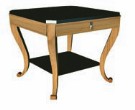Basic HTML Version



class 2
GS1
Finitura primaria: tinta noce scuro (GS), finitura di
contrasto: color argento anticato (122)
Main finish: dark walnut coloured (GS), contrasting finish:
silver tones, antiqued (122)
Hauptoberfläche: nussbaumfarbig dunkel (GS),
Kontrastoberfläche: silberfarben antikisiert (122)
45C
Finitura primaria: tinta nero di seppia (45), finitura di
contrasto: tinta cognac (C)
Main finish: india ink (45), contrasting finish: cognac (C)
Hauptoberfläche: sepiafarben (45), Kontrastoberfläche:
cognacfarben (C)
C45
Finitura primaria: tinta cognac (C), finitura di contrasto:
tinta nero di seppia (45)
Main finish: cognac (C), contrasting finish: indian ink (45)
Hauptoberfläche: cognacfarben (C), Kontrastoberfläche:
sepiafarben (45)
Lavorare le finiture per conferire “il vecchio stile” è
un procedimento del tutto straordinario. L‘aspetto
particolarmente nobile si raggiunge dopo numerose fasi di
lavoro artigianale applicando i segni di rovinio, la patina e
le lacche. Le ombreggiature anticate si formano con delle
patine. Di particolare rilievo sono le numerose carteggiature
e levigature tra le singole fasi di lavorazione. La ceratura
finale su alcune finiture viene sapientemente dosata con
estrema capacità dai nostri lucidatori; in tal modo si ottiene,
alla fine, un prodotto curato ma soprattutto unico. I segni di
rovinio dovuti all‘utilizzo quotidiano enfatizzano il carattere
antico di questi mobili. Le finiture di questi mobili sono
pensate per un uso delicato.
I mobili con le finiture 60 e 62 rievocano pezzi antichi,
dando l‘impressione di avere un lungo vissuto. Ad esempio,
diamo agli spigoli un aspetto consunto e logoro, levigandoli
abilmente in modo irregolare, per simulare un‘usura dovuta
all‘uso prolungato nel tempo. Le faccette e gli spigoli dei
profili sono realizzati a mano appositamente con colori
contrastanti e volutamente in modo irregolare. E, grazie a
questa irregolarità e a i segni di rovinio, ogni singolo mobile
assume l‘aspetto di un pezzo unico, inconfondibile. Gli
schienali a vista delle vetrine e degli scaffali vengono sempre
lucidati in finitura ciliegio. Le finiture di questi mobili sono
pensate per un uso delicato.
Finishes that are still produced “the old-fashioned way” are
something completely extraordinary. The especially fine
appearance is attained through many production steps by
hand through the application of distressed touches, stains,
and lacquers. Antiquing shadings are created through the
application of patinas. Especially to be emphasised is the
repeated sanding and buffing between each production
step. Finally, several of the surfaces receive a wax finish that
is carefully applied by hand, perfecting and emphasising
the antique character. Through the course of time, existing
distressed touches will underscore the antique character of
this furniture. These finishes are designed for protective
use. Furniture with the finishes 60 and 62 are modeled
on antique pieces. They are to give the impression that
these pieces of furniture already have a long history behind
them. In particular, worn down edges are achieved by
us by intentionally and skillfully grinding the edges in an
irregular manner. They are subject to an especially great
deal of wear during use. Facets, edges and mouldings are
intentionally provided with somewhat irregular contrasting
colours by hand. As a result of these individual irregularities
and distressed touches, every piece of furniture becomes an
unmistakable individual piece.
The visible back walls of china cabinets and the backs of
open bookcases are always polished with a cherry colour.
These finishes are designed for gentle use.
„Im alten Stil“ verarbeitete Oberflächen sind etwas ganz
Außergewöhnliches. Die besonders edle Anmutung
wird in vielen handwerklichen Arbeitsgängen durch das
Anbringen von Gebrauchsspuren, Beizen und Lacken
erreicht. Antikisierende Schattierungen werden durch das
Auftragen von Patinas erzeugt. Besonders hervorzuheben
ist das wiederholte Anschleifen und Ausreiben zwischen
den einzelnen Arbeitsgängen. Abschließend erfährt
ein Teil der Oberflächen ein sorgfältig von Hand
aufgetragenes Wachsfinish, das den antiken Charakter
vollendet und unterstreicht. Die mit der Zeit entstehenden
Gebrauchsspuren unterstreichen den antiken Charakter
dieser Möbel. Die Oberflächen sind für den schonenden
Gebrauch gedacht.
Möbel mit den Oberflächen 60 und 62 sind antiken
Möbelstücken nachempfunden und sollen den Eindruck
erwecken, als hätten sie bereits eine lange Geschichte
hinter sich. Im Detail werden von uns abgegriffene
und abgenutzte Kanten durch gekonntes und bewusst
unregelmäßiges Anschleifen jener Kanten erzeugt, die im
Gebrauch besonders strapaziert sind. Facetten und Kanten
an Profilierungen werden mit Kontrastfarben bewusst
etwas unregelmäßig von Hand ausgelegt. Jedes Möbelstück
wird durch diese individuellen Unregelmäßigkeiten und
Gebrauchsspuren zu einem unverwechselbaren Einzelstück.
Die sichtbaren Vitrinenrückwände sowie die Rückwände der
offenen Regale werden immer kirschbaumfarbig poliert.
Diese Oberflächen sind für den schonenden Gebrauch
gedacht.
class 4
Malgrado la lavorazione accurata delle finiture
45C, C45
e GS1 si raccomanda un particolare riguardo nell‘uso
quotidiano
del mobile. Informazione: la presenza di
micrograffi dovuti all‘utilizzo ed alla pulizia del mobile è
maggiormente visibile sulle superfici scure rispetto alle
chiare.
In spite of the top quality craftsmanship of the finish
45C, C45 and GS1 more gentle use is recommended.
Please note: tiny scratches that are formed with normal
use and care are more easily recognisable on dark finishes
than on lighter ones.
Trotz hochwertiger Verarbeitung der Oberflächen
45C, C45 und GS1 wird ein schonender Gebrauch
empfohlen.
Hinweis: Auf dunklen Oberflächen sind
die bei normalem Gebrauch und Pflege entstehenden
feinen Mikrokratzer leichter zu erkennen als auf hellen
Oberflächen.
236

